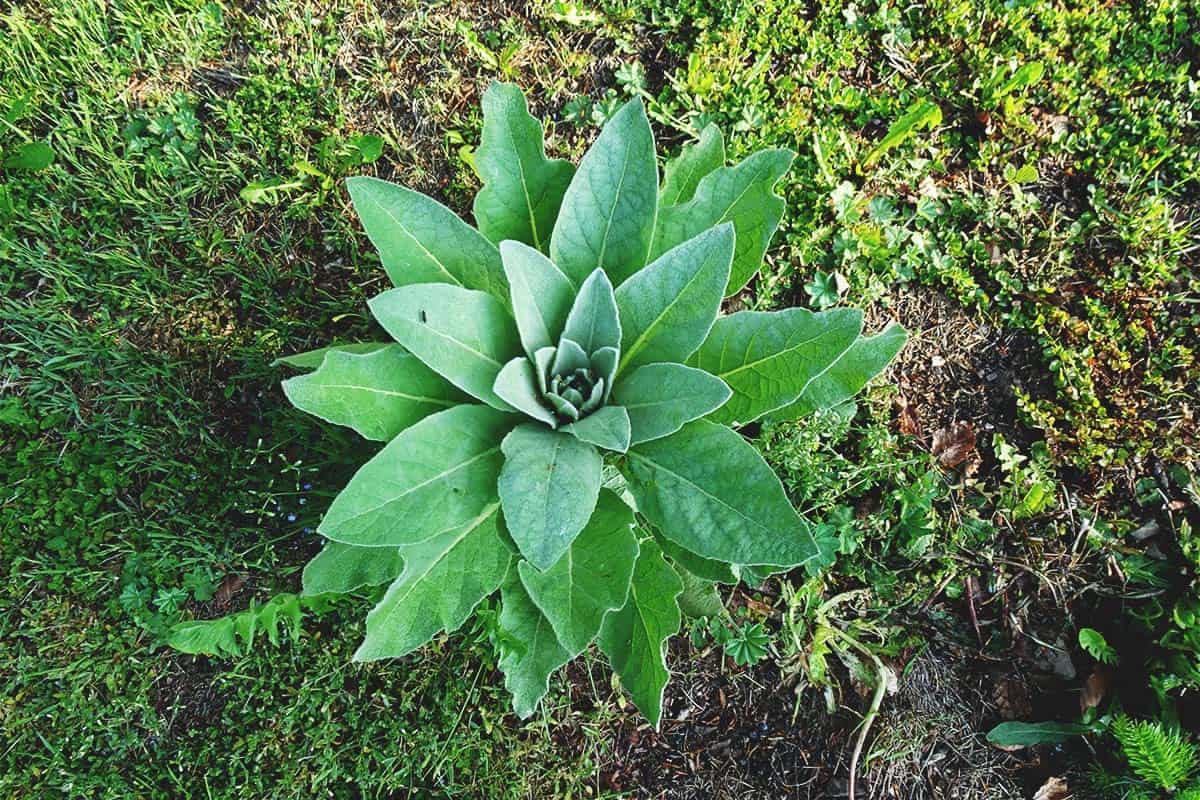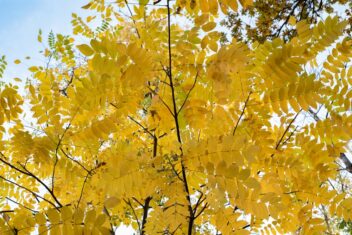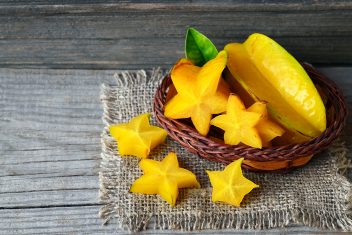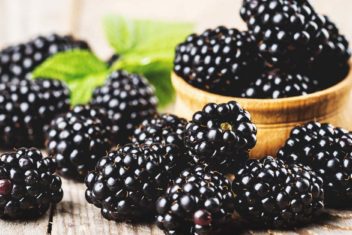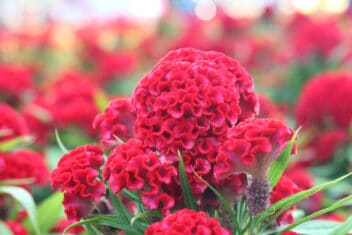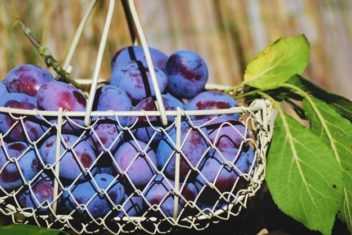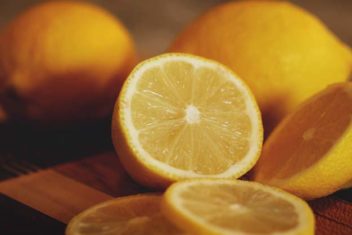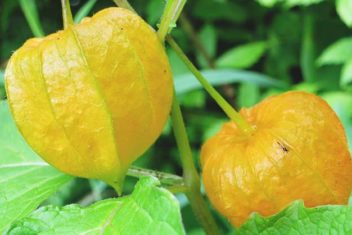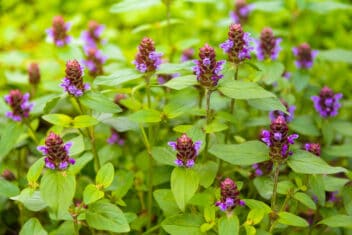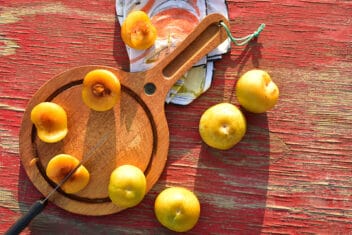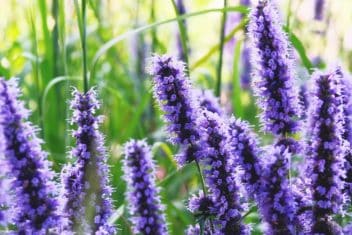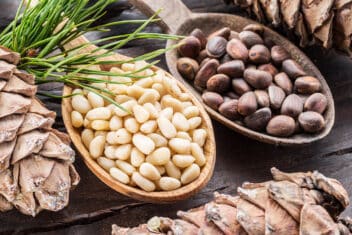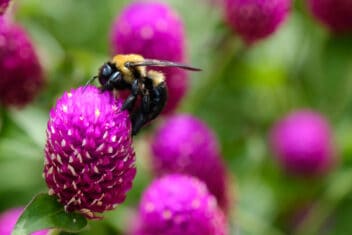Mullein isn’t one of those common herbs that every gardener grows like sage and basil, but in temperate climates, growing mullein can be quite straightforward. It’s a medicinal herb that produces beautiful flowers that most people have first seen growing in fields and ditches rather than backyard gardens.
I’d considered growing mullein until I learned that the oil from this herb is a potent remedy for ear infections. With four kids under my roof, ear infections are a foe that I cannot stand, so I decided to grow mullein and make the oil myself.
Mullein oil is effective against ear infections in case you wanted to know! We will never go without it now. But that’s not the only reason to grow this plant. It can also help with coughs and diarrhea, and you can eat the flowers and leaves.
Mullein has naturalized across the U.S. and because it’s such a tough herb, it’s pretty simple to raise in the garden. Some people consider it an ugly weed, but I think the unusual corn-like shape of mullein is quite attractive. Some of the new varieties feature stunning floral displays.
If you’re interested in learning how to grow mullein in your herbal garden, let’s go over everything that you need to know.
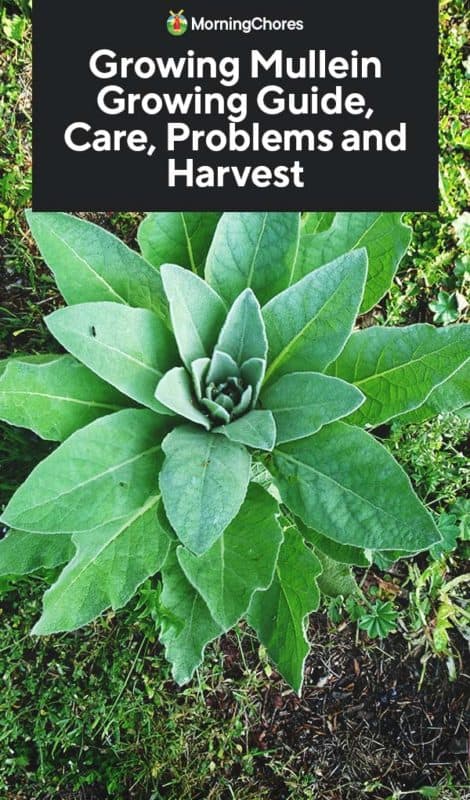
The Best Varieties of Mullein
For years, mullein was considered simply an invasive weed that grew in abandoned fields or ditches along highways. Nowadays, there are over 250 species of mullein, some of which are biennials or perennials.
Here are some of the different types of mullein that you can grow in your garden.
Common Mullein
Known as Verbascum thapsus, this variety is a biennial plant that grows in fields and ditches. It produces yellow flowers that grow at the tips of the 6-foot-tall stems. The leaves are grey-green, fuzzy, and broad. This variety does well in zones 3-9.
Olympic Mullein
Known as Verbascum olympicum, this variety reaches 6-8 feet tall when in full bloom and grows well in zones 5-11. During the first year of growth, this plant produces silvery-grey foliage, even throughout the winter. Then, in the second year, Olympic mullein creates a branch of yellow blooms. It might die after blooming.
Southern Charm Mullein
Here’s a seed-propagated variety that produces lovely spikes of lavender, rose, cream, or buff flowers. The blooms peak in late spring, but you might notice sporadic blossoms throughout the summer as well. This variety grows well in zones 5-8, and it’s a short-lived, self-seeding perennial.
White Nettle-Leaved Mullein
This type is a wonderful variety for your garden beds. It creates saucer-shaped white flowers that have rosy-purple stamens. The blooms are produced on long spires and wooly stems that grow up to 3 feet. You can grow these plants in zones 5-9.
Summer Sorbet Mullein
If you want a show-stopping mullein variety, summer sorbet produces hot-raspberry-pink blossoms that grow on 2-foot tall stems, producing blooms all summer if you properly deadhead the plant. It’s not as large as other types, only growing 12-15 inches wide and ideal for zones 5-9.
How to Grow Mullein in Your Garden
Mullein plants grow up to 6 feet high, which leaves a unique impression. The leaves grow up to 2 feet across, and it can stand out considerably in a garden bed.
The Right Soil for Mullein
Since mullein grows on roadsides, you can believe that this plant isn’t too picky about the quality of the soil. It grows well in a variety of earth, but mullein prefers well-draining soil, as well as poor, calcareous soil. For best growth, the soil needs to be dry and slightly alkaline.
The Right Location for Growing Mullein
Most importantly, remember that mullein needs plenty of space to grow. Since this plant can reach heights up to 10 feet tall, you have to be sure to select a location that doesn’t have compromised space. Some new cultivars only reach heights of 5 feet tall.
Aside from space, mullein prefers full sunlight in a dry, warm location. It does best if you plant this herb near the walls or large trees to help provide protection from the wind. Remember, these are tall plants, so big gusts of wind could cause damage to the plant.
Starting Mullein from Seeds
Mullein can be propagated from seeds or cuttings. Collect seeds from plants as soon as they appear. You can also purchase seeds.
It’s best to start mullein seeds indoors in the early springtime. Make sure to start the plants from seed indoors 6-8 weeks before the last frost in spring. Sprinkle seeds on the top of the potting soil before watering well. Mullein seeds take about two weeks to germinate, so be patient. It takes time for the seedlings to appear.
You also can sow the seeds directly in the garden in late spring. That might take longer, so be sure that you have a longer growing season to support doing so.
Once the seedlings appear, thin them out. As they grow, you can transplant the plants into a larger pot or the ground once they have their real leaves.
Planting Mullein in Your Garden
Depending on the variety that you pick, taller ones need to be planted at a distance of 3 feet apart. If you select a shorter type, plant them 12-14 inches apart.
How to Care for Mullein
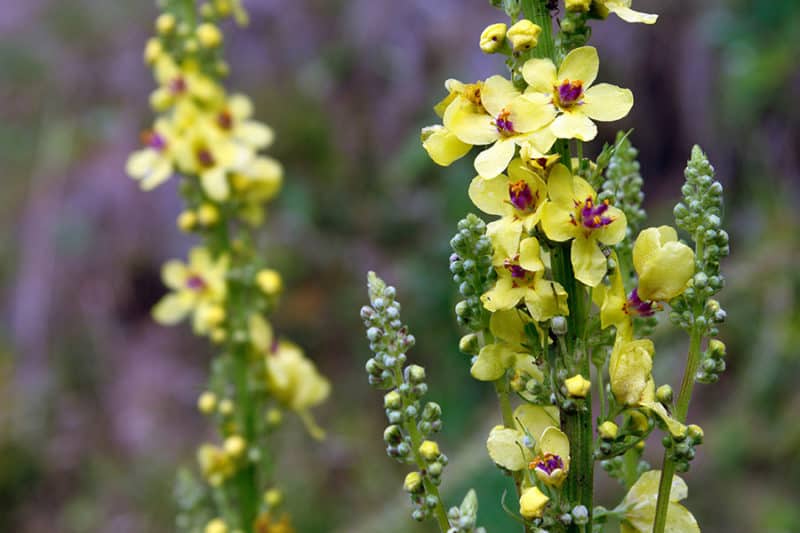
Watering Mullein Plants
This plant doesn’t have high water requirements. When it starts to flower, you can increase the watering slightly. Try not to keep the soil consistently moist, otherwise. You’ll reduce growth.
Fertilizing Mullein Plants
You don’t have to feed mullein, but you can do so if you want. If you feel the urge to fertilize, do so at the beginning of the growing season with a slow-release, 10-10-10 fertilizer. This helps to encourage faster growth and abundant blooms.
Overwintering Mullein in the Garden
Mullein is biennial, and it’s also frost resistant. This plant tolerates temperatures as low as 5℉, which is pretty low for most regions of the United States and Europe.
Despite its ability to withstand frost, it’s still best to use mulch before a frost. Cover up the surface around the plant with a layer of straw, twigs, leaves, or bark. Doing so helps to insulate the roots from the cold temperatures.
The Best Companion Plants for Mullein
Mullein grows well when its alongside other plants. If you want to grow this herb successfully, consider placing it near some of the best companion plants.
- Peonies
- Russian Sage
- Lady’s Mantle
- Sedum
- Coneflower
- Ornamental Grasses
Common Diseases and Pests for Mullein
Mullein is exceptionally resistant to pests. For the most part, you don’t have too much to worry about when it comes to pests and diseases. Here are two different problems that might surface.
Aphids
Aphids are little insects that attach to your plant, in particular, the underside of leaves. They like to suck the sap out of the plants, causing them to wilt slowly. While aphids typically won’t kill a plant unless it’s a severe infestation, they can damage the harvest and lead to stunted growth.
You can remove aphids by hand or use a strong jet of water to knock them off of the plant. Severe infestations might require an insecticide.
Root Rot
Root rot is a disease that attacks the root of a plant in wet or damp soil. It can lead to the decaying of the plant, reducing the life span, or stunting the overall growth. Root rot also leaves it vulnerable to other pest problems because the plant is susceptible.
The best way to avoid root rot is not to overwater your mullein plants. They prefer less water, anyway, so let the soil dry out well between waterings.
Harvesting Mullein
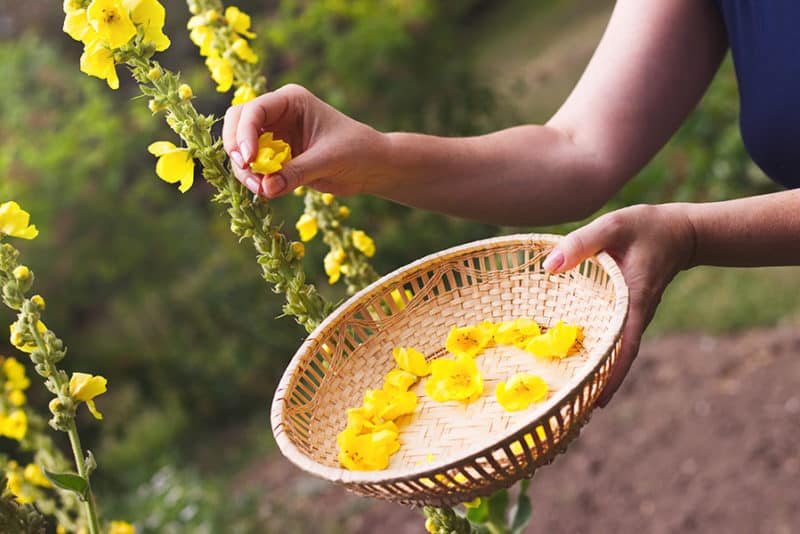
Between June and October, you can harvest the flowers from the mullein plants. It’s best to do so in the morning and let the flowers dry in the shade. When you collected leaves earlier in the day, they are higher in essential oils. Those gathered in the afternoon contain more glycosides.
Mullein leaves are gathered in the first year of growth, but herbalists believe that the second-year leaves are more effective when used in medicinal teas. During the second year, the stalk and blossoms grow, and you can harvest the flowers daily, as they open.
The fresh leaves and flowers are a tasty addition to salads. You can also harvest the root of the mullein herb.
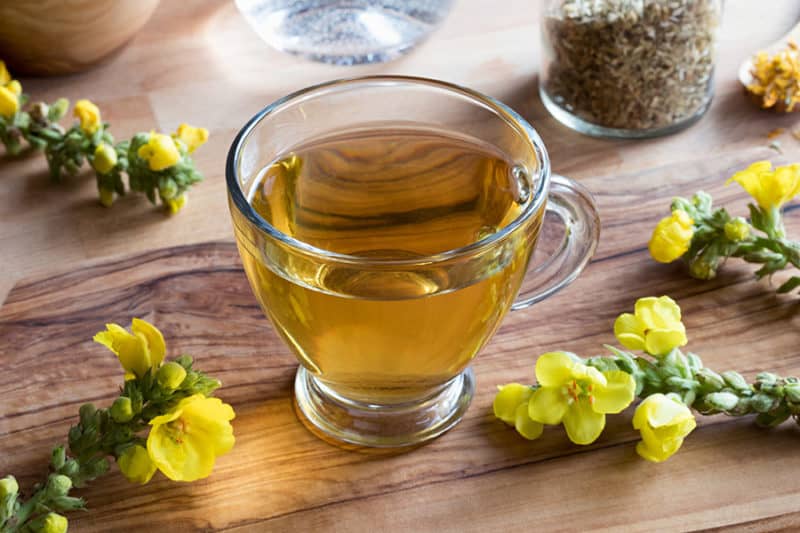
Once you harvest mullein, you can use it to create medicinal herbal teas by pouring boiling water over fresh or dried mullein leaves. Large, fresh mullein leaves can be used to develop poultices to treat joint pain or gout. Mullein has a long history of medicinal uses, so speak to a certified herbalist to help you figure out how to use yours.
Final Thoughts
Mullein is well known for being a versatile medicinal herb. Since it doesn’t have intense watering needs or specific soil requirements, figuring out how to grow mullein in your garden is relatively simple. With the right location, you should be able to grow some show-stopping mullein plants for your garden beds that will work alongside your other flowers and herbs.
